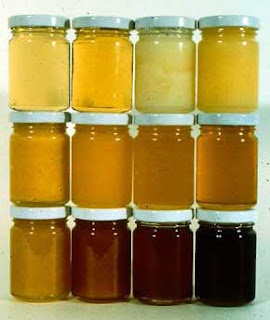I don't know what the spring equivalent of an Indian summer is, but that's what we're having and jolly nice it is too. We haven't seen a cloud for many days, and the clarity of the blue spring light lasts all day and just takes the breath away. The sight of Mont Valier through the trees, still deeply snow covered against the blue sky, is nothing short of awesome. Everything is growing at an unbelievable rate: where a week ago was bare earth, we now have five yellow tulips, perfectly in flower, and the onion plants I planted out last weekend have grown several centimetres. Azaleas are in flower all over the garden. Blossom is ready to burst. The birds are as noisy as on a May morning - save, that is, the blackbird who has chosen our land as his territory, who I'm beginning to think has a speech impediment. Yesterday we heard, and then saw, a Great Spotted Cuckoo fly over the house - a new bird for us both, and a bit of a rarity here.
Ad we've been spring cleaning. It never ceases to amaze me just how much work it takes to keep Grillou's garden looking natural and semi-wild. There are times when I think it must be easier to have one of those dreadful English style gardens with flat lawn and flower beds, and indeed I occasionally yearn for one - usually after several hours of bramble or ivy-and-moss removal, and admittedly for just three seconds at a time, after which the real me returns.
Tomorrow, at precisely 12.43 French time, is the Spring Equinox - the day when the sun moves across the celestial equator, rising exactly in the east and setting exactly in the west. It's the true first day of spring; the day when the winter darkness gives way to warmth and new light. Celebrated in almost all traditional cultures, it's yet another seasonal landmark that many of us today have lost touch with. But it's a day to celebrate new growth, new ideas, new enthusiasms, and the beginnings of new projects.
Me? I'll be on a plane, headed for north-east England; I'm spending a week on an intensive tiling training course, leaving John to carry on the spring cleaning here. I'm a reasonable tiler; being the insufferable perfectionist that I am I can make a pretty good job of a simple floor or wall. But this is Grillou, which doesn't do simple. And with nearly 200 square metres of tiling to be done over the next few months, it's clear that a little more theory and technical know-how won't go amiss if the finished product is going to look as good as it should. Having searched high and low for training in France without success (artisans here tend to learn over years as apprentices, or via a 3 year BAC professionel), there was only one option - a week in England, notably in South Shields, home to one of the three most highly rated professional courses.
To tell the truth, I'm a bit daunted. Not at the idea of the course, though it'll be interesting being the token woman (!), but at leaving our lovely plants and birds and butterflies and blossom and mountains and most of all our silence for a week in the land of traffic and concrete. I didn't quite realise until this evening, when I took a last walk around the garden, how incredibly attached I've become to Grillou in just two years. I'll miss friends, the simplicity of life here, the Pyrénées, and of course the weather. But hey, there are compensations. South Shields is the curry capital of the north-east ...
See you all in a bit over a week!





